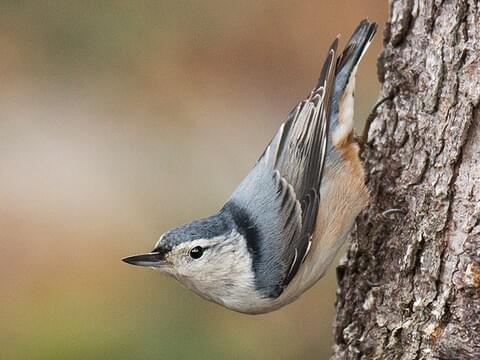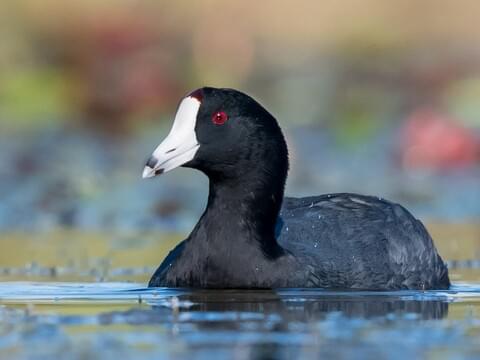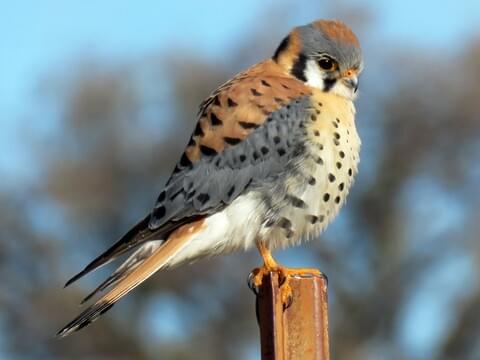Page 3 of 4
Re: Ornithology B/C
Posted: November 12th, 2019, 1:49 pm
by vehicleguy

1. Common Name
2. What is the unique ability shown in the picture that other birds cannot do?
3. What human activity is making this bird vulnerable?

1. Common Name
2. Name another bird in its family
3. After how many days from when it hatches does it first begin to fly?
Re: Ornithology B/C
Posted: November 13th, 2019, 6:14 am
by ChimpLopez
vehicleguy wrote: ↑November 12th, 2019, 1:49 pm

1. Common Name
2. What is the unique ability shown in the picture that other birds cannot do?
3. What human activity is making this bird vulnerable?

1. Common Name
2. Name another bird in its family
3. After how many days from when it hatches does it first begin to fly?
1. White Breasted Nuthatch 2. It can move head down first on trees 3. Deforestation
1. American Coot 2. Purple Gallinule 3. 7-8 weeks
Re: Ornithology B/C
Posted: November 13th, 2019, 6:55 am
by vehicleguy
ChimpLopez wrote: ↑November 13th, 2019, 6:14 am
vehicleguy wrote: ↑November 12th, 2019, 1:49 pm

1. Common Name
2. What is the unique ability shown in the picture that other birds cannot do?
3. What human activity is making this bird vulnerable?

1. Common Name
2. Name another bird in its family
3. After how many days from when it hatches does it first begin to fly?
1. White Breasted Nuthatch 2. It can move head down first on trees 3. Deforestation
1. American Coot 2. Purple Gallinule 3. 7-8 weeks
Perfect! Just use spoiler next time you answer a question.
Re: Ornithology B/C
Posted: December 29th, 2019, 12:52 pm
by SilverBreeze
Since no one is posting...
1. What bird makes the call: "Who cooks for you, who cooks for you all?"
2. Is it nocturnal or diurnal?
3. True or False: the male is larger than the female.
4. What is its standard clutch size, and what color are the eggs?
Re: Ornithology B/C
Posted: December 29th, 2019, 5:56 pm
by Nooran008
SilverBreeze wrote: ↑December 29th, 2019, 12:52 pm
Since no one is posting...
1. What bird makes the call: "Who cooks for you, who cooks for you all?"
2. Is it nocturnal or diurnal?
3. True or False: the male is larger than the female.
4. What is its standard clutch size, and what color are the eggs?
1. Barred Owl
2. Well, they are much better described as crepsucular, as they are mostly active at dawn and dusk
3. False
4. 1-5 eggs, which are pure white
Re: Ornithology B/C
Posted: December 30th, 2019, 1:49 pm
by SilverBreeze
All correct, although I had 2-3 for clutch size, but that tends to vary depending on the source. Your turn!
Re: Ornithology B/C
Posted: December 31st, 2019, 12:45 pm
by Nooran008

1.What bird is this?
2. What type of nests does this bird make
3. What is its diet?
4. What is its usual behavior?
Re: Ornithology B/C
Posted: December 31st, 2019, 8:29 pm
by SilverBreeze
Nooran008 wrote: ↑December 31st, 2019, 12:45 pm

1.What bird is this?
2. What type of nests does this bird make
3. What is its diet?
4. What is its usual behavior?
1. American Kestrel
2. Cavity, usually dead tree/snag
3. Mostly large insects, also come small mammals, birds, reptiles
4. Watch from a high perch or hover, then swoop down to capture prey
Re: Ornithology B/C
Posted: January 13th, 2020, 7:07 pm
by vehicleguy

1. common name
2. Why would this bird want to get fat?
3. Name two adaptations this bird has to walk on slippery rocks
4. True or false: This bird can begin a 1000 mile migration 20 days after it is born
5. Name two countries this bird can be found
6. Where does the common name of this bird come from?
Re: Ornithology B/C
Posted: February 4th, 2020, 3:53 pm
by kate!
vehicleguy wrote: ↑January 13th, 2020, 7:07 pm

1. common name
2. Why would this bird want to get fat?
3. Name two adaptations this bird has to walk on slippery rocks
4. True or false: This bird can begin a 1000 mile migration 20 days after it is born
5. Name two countries this bird can be found
6. Where does the common name of this bird come from?
1. Ruddy turnstone
2. I'm not sure.. to be bigger and seem like a threat to predators?
3. Short, powerful legs and curved toes
4. True
5. US and Canada
6. From the unique calico pattern on their back when breeding.



